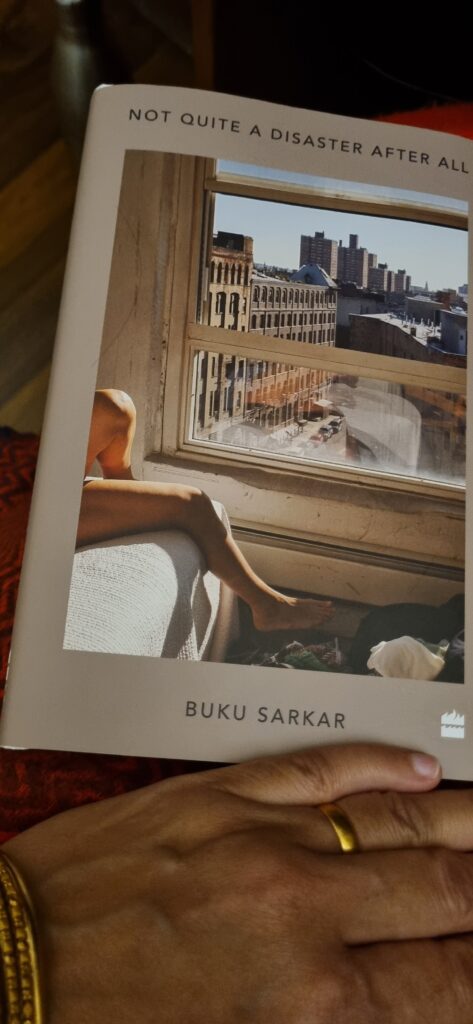Buku Sarkar, “Not Quite a Disaster After All”

Buku Sarkar‘s Not Quite a Disaster After All ( HarperCollins India) is a collection of six interlinked stories or six vignettes, if you will. The stories revolve around two women — Anjali and Anita. Anjali is the daughter of a very wealthy family from Calcutta. Anything that she asks for or desires is easily fulfilled; an option that she does not necessarily exercise when testing her wings in New York as a student. She is ultimately successful in her career as a designer and also becomes an author. Her fastidiousness for detail in everything that she does permeates through every story in the collection. Surprisingly, she is far more generous and forgiving of her friend Anita who lives in Ohio and is a mother trying to juggle a career too. In some senses, the friends work like counterpoints to each other in the story, almost as if the distance between them due to their difference lifestyles and behaviour creates an amplitude that indicates what women are capable of. They represent the extreme points of women in society. These two are the central women, but there are other women characters like Anjali’s mother, a devoted wife, Anjali’s editor and the young book publicist. They can be considered as stereotypical examples of women homemakers, wives and publishing professionals or they can be seen as alternative role models to the lives that Anjali and Anita have chosen.
The stories are seemingly arranged chronolgically to depict the life of Anjali from childhood to a successful designer based in the UK and who has a book launch in New York. She is living the middle class dream. But as the stories show, there is a dissatisfaction and a simmering discontent. It is a feeling that begins in childhood when even Anjali has not a clue what it implies. It is in the title story that Anjali seems to be at peace and when that occurs, the reader heaves a sigh of relief.
Buku Sarkar is a much published writer in many magazine publications but this is her first book. It is remarkably composed and poised writing. At first, it does not feel as if there is anything complicated in the writing style. Simple. She evokes childhood memories. She writes about the past in India and the USA. It is done almost in a bored, languid, matter-of-fact style. Yet, by the time the book concludes, the characters have neatly nestled inside one and are part of one’s life. The title “Not Quite a Disaster After All” grows on one from being at first a seemingly wishy-washy title to a strong, assertive remark. You can almost hear the women chant it to themselves to reaffirm their existence and purpose. It is very well done.
Read it.
26 Jan 2023
